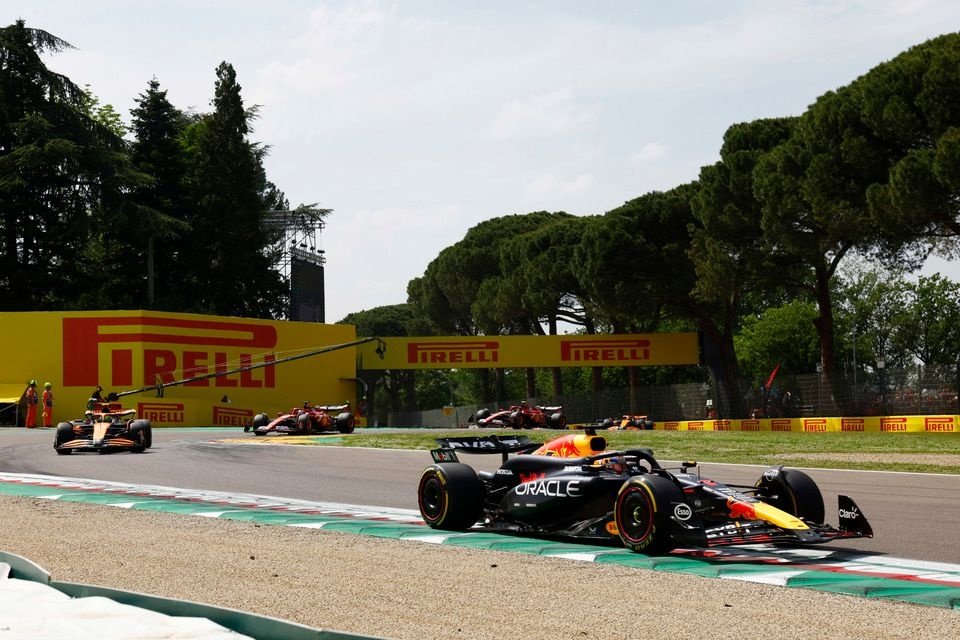Pirelli has faced a significant challenge since becoming the exclusive tire supplier for Formula 1 in 2011. Its main objective has been to create tires that exhibit a sharp performance decline after a certain threshold, while also catering to the drivers’ request for tires that can maintain performance throughout an entire race stint. These two aspects, while not inherently contradictory, present a complex balancing act that is difficult to navigate.
Drivers and teams alike are keen to avoid races that devolve into monotonous, processional events where competitors are hesitant to push their cars for fear of prematurely degrading their tires. In scenarios where overtaking proves challenging—either due to track design or closely matched vehicle performance—teams often prioritize track position, leading to strategies aimed at minimizing pit stops.
In response to these concerns, Pirelli has adjusted its tire compounds this season to enhance durability. This change has resulted in more one-stop races and a reduction in strategic variety. In several races, the performance difference between the hard and medium tire compounds has been so minor that it has nearly eliminated the strategy of extending a tire stint to gain an advantage later in the race.
According to the current regulations, three dry-weather tire compounds—designated as hard, medium, and soft—must be provided for each race. Until this year, these compounds were selected in a sequence from a pool of five, labeled C1 to C5, based on the specific needs of each circuit.
The repetitive nature of the Japanese Grand Prix raised concerns among stakeholders, prompting Pirelli to propose a potential solution: the idea of “skipping” tire compounds to create more significant performance differences. This strategy could encourage teams to adopt two-stop race strategies or introduce an element of risk during sprint weekends, thereby forcing teams to make tough decisions regarding tire usage.
A crucial element of this plan hinges on the performance of the newly introduced C6 tire, which has been tested but not yet utilized in actual races. The upcoming Imola race will mark the first opportunity for this tire to be included in race strategies. The data collected during this event, assuming dry conditions, will be vital in determining whether Pirelli will proceed with its compound-skipping strategy.
Mario Isola, Pirelli’s motorsport director, elaborated on this during the Miami race weekend, emphasizing the inability to modify existing tire compounds during the season. Instead, Pirelli is exploring alternative strategies to prompt teams into adopting two-stop race approaches. “We need to understand if there is any other possible approach in tire selection to push them [the teams] to have a two-stop strategy,” Isola stated.
For the Imola race, Pirelli will provide the softest tire choices of the season thus far, with the C6 originally intended as a super-soft option for street circuits. Pirelli aims to avoid a repeat of the situation encountered with the hyper-soft compound introduced in 2018, which only saw use in Monaco and failed to deliver the expected results, as drivers opted to run significantly slower to avoid multiple pit stops.
The goal is to gather performance data on the C6 under race conditions, as current test data may not accurately represent real-world scenarios. “Hopefully, if it’s dry, [the aim is] to gather data on the C6,” Isola indicated, adding that they would need to simulate various race conditions to determine if skipping a compound would be feasible. For example, the relatively close lap time delta between the C3 and C4 compounds may necessitate considering alternatives like the C2, C4, and C5 for optimal racing strategies.
In Monaco, two pit stops have been mandated for this season, but this approach is unlikely to be universally implemented, as it could lead to a scenario where all teams adopt similar strategies, stopping at analogous times. The overarching aim is to foster a landscape of strategic variation, where teams can choose between one, two, or even three pit stops based on tire performance and race conditions.
The best way to achieve this diversification in strategies is through encouragement rather than enforcement. However, there is a risk that a more pronounced performance gap between tire compounds could result in one compound becoming the preferred choice for qualifying, rarely being used during the race itself. To mitigate this risk, Pirelli has been collaborating with the commercial rights holder to simulate possible race outcomes.
“We can also explore combinations such as C1, C3, and C5,” Isola mentioned, acknowledging that while the results of such combinations are uncertain, they remain a possibility. “We never decide it ourselves. We propose to the FIA and F1 and discuss our suggestions with the teams to reach a consensus.”
Pirelli’s simulations have also examined whether it’s feasible to create scenarios that push teams into challenging decisions during sprint weekends, potentially requiring them to sacrifice performance in the sprint race for a more advantageous tire selection in the main event. However, the effectiveness of engineering such scenarios is a complex issue, given the advanced simulation capabilities possessed by the teams.
“It’s an ongoing challenge,” Isola remarked. “We strive to present a problem for the teams, and they continuously find solutions…” This dynamic relationship between Pirelli and the teams highlights the intricate balance of strategy, performance, and tire management that defines modern Formula 1 racing.
As the season progresses and races unfold, the tire strategies employed by teams will continue to evolve, influenced by the nuances of tire performance and the ever-changing dynamics of competitive racing. The decisions made by Pirelli, the teams, and the FIA will shape the future of tire use in Formula 1, aiming to create a more exciting and strategically diverse racing experience for fans and competitors alike.
